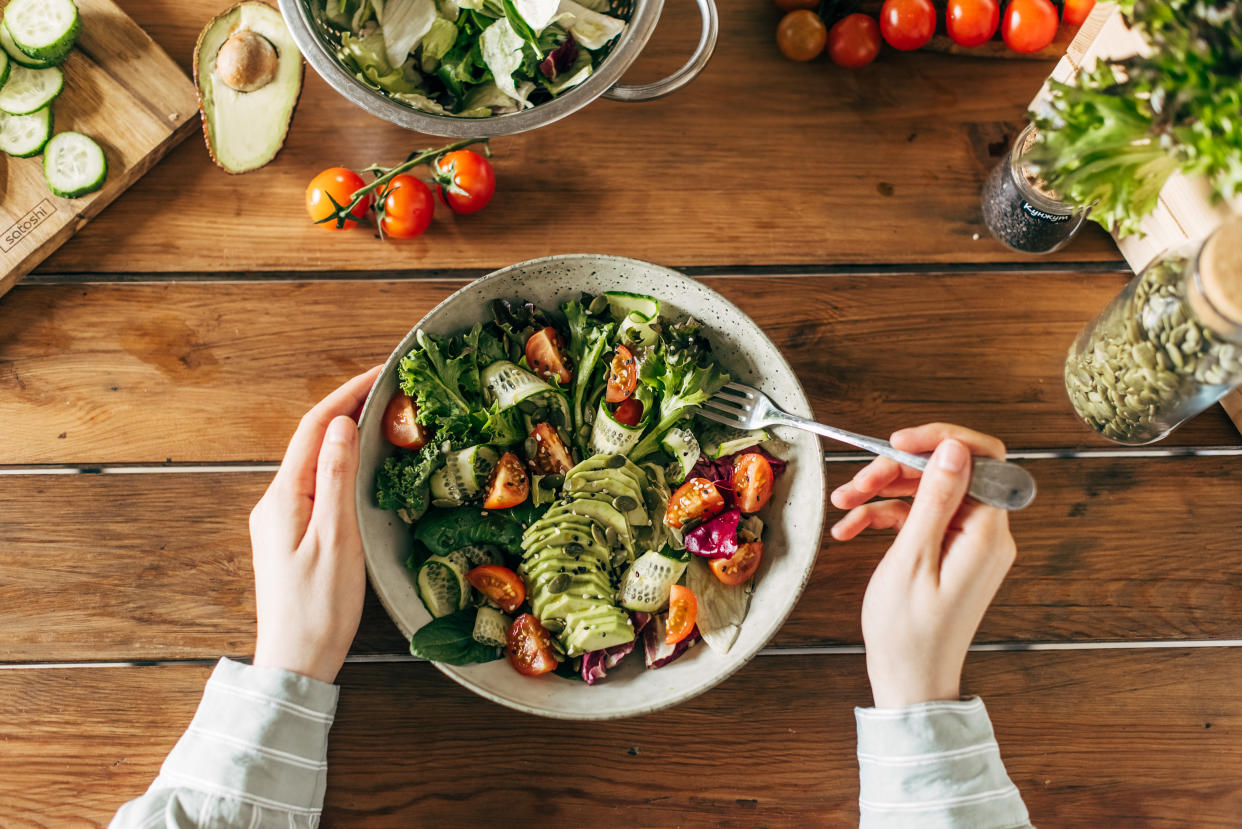Most Americans aren't eating an ideal diet, according to a new study. Here's how you can improve.

Americans are eating slightly better — but not necessarily at their best. That’s what a new study from the Food is Medicine Institute at Tufts University has found, and it highlights where people are falling short when it comes to eating an ideal diet.
The new research used the American Heart Association diet score, which measures a healthy diet by weighing the amount of components like fruits, vegetables, beans and nuts, whole grains, sugary beverages and processed meat in one’s daily intake compared with the AHA’s recommended standards. The study considered a poor diet to meet 40% or less of the AHA standards, while an intermediate diet met 40% to 79.9%. An ideal diet met 80% or more of the AHA standards.
Overall, it appears that American diets are improving. The study found that between 1999 and 2020, the proportion of American adults with poor diet quality decreased from 48.8% to 36.7%. Those with intermediate diet quality increased from 50.6% to 61.1%. However, the percentage of adults with an ideal diet remained very low, improving from only 0.66% to 1.58%.
The senior author of the study, Dr. Dariush Mozaffarian, a cardiologist and director of the Food is Medicine Institute, tells Yahoo Life that the study “found good news and bad news.” He notes that “on the plus side, Americans’ diets were better in 2020 than they were in 1999.” But he points out that these improvements happened between 1999 and 2010. Since then, “diet quality has been pretty flat.”
Mozaffarian says that the study identified large disparities in these improvements by age, sex, education and income. While improvements were highest among younger adults, women, Hispanic adults and those with higher education and income, they were lower among older adults, men, Black adults and those with lower income or food insecurity.
“Among higher-income households, the percent with poor diet quality declined from 46% to 30% (a 16% absolute reduction) between 1999 and 2020,” Mozaffarian says. “Among lower-income households, the decline was only from 52% to 47% (a 5% absolute reduction).”
In short? “The rich are getting richer — including in the quality of food they eat,” Mozaffarian says.
How can we improve our diet overall?
“The study reveals a modest improvement in American diets over the past two decades but emphasizes that significant disparities persist, with many still facing poor diet quality,” dietitian Michelle Routhenstein tells Yahoo Life. “This finding is concerning given the parallel rise in chronic diseases linked to poor nutrition, highlighting the urgency of addressing these challenges.”
Dietitian Rita Faycurry says that Americans “have to do better,” and that “as a whole, we are still having too much sodium and processed foods and not enough fruits and vegetables,” even as, per the study, Americans are reducing their intake of beverages with added sugar, fruit juices and refined grains.
Mozaffarian tells Yahoo Life that the biggest failures come from what’s missing in the American diet, which are “too few protective foods like fruits, vegetables, whole grains, nuts/seeds and fish/shellfish.” This is an important message, he says, because for too long policies have focused on removing negative aspects from our diet, rather than adding healthy foods.
Eating more of the recommended food from the AHA list is the first step to getting closer to that ideal diet. Here are some tips from experts that make doing so a bit easier.
“If produce is expensive and not in season, buy it frozen,” says Faycurry. “It lasts longer, is just as nutritious and is cheaper than fresh fruits and vegetables.”
Reduce your intake of sugar and processed foods, says dietitian Kimberly Gomer. This means buying fewer foods like store-bought cookies, cakes and chips, which are not nutrient-dense and may leave you feeling hungry later. “This can make a huge difference in health outcomes,” she says. Whole foods, like fruits, can satisfy a sweet tooth instead.
Love guac? Gomer gives you permission to “add avocado to everything.” The fruit (yes, it’s a fruit!) adds “anti-inflammatory omega-3 fats to your diet.” Plus, it’s also full of fiber.
Prepare food at home, says Routhenstein, rather than grabbing fast food or restaurant meals, in order to have more control over what’s in your meals. In addition to adding more vegetables and fruit to your plate, “opt for whole grains and lean proteins,” she says. This might look like shrimp with rice and veggies, or a bean burrito with a whole wheat tortilla.
“Stock up on canned beans like black beans, white beans and kidney beans,” says Routhenstein. “They're inexpensive, protein-rich and can be added to soups, salads, tacos and more.”
Cut out sugary beverages, like soda and fruit juices, says Routhenstein. If plain water isn’t your favorite, you can flavor fizzy water with a squeeze of lime or lemon."
